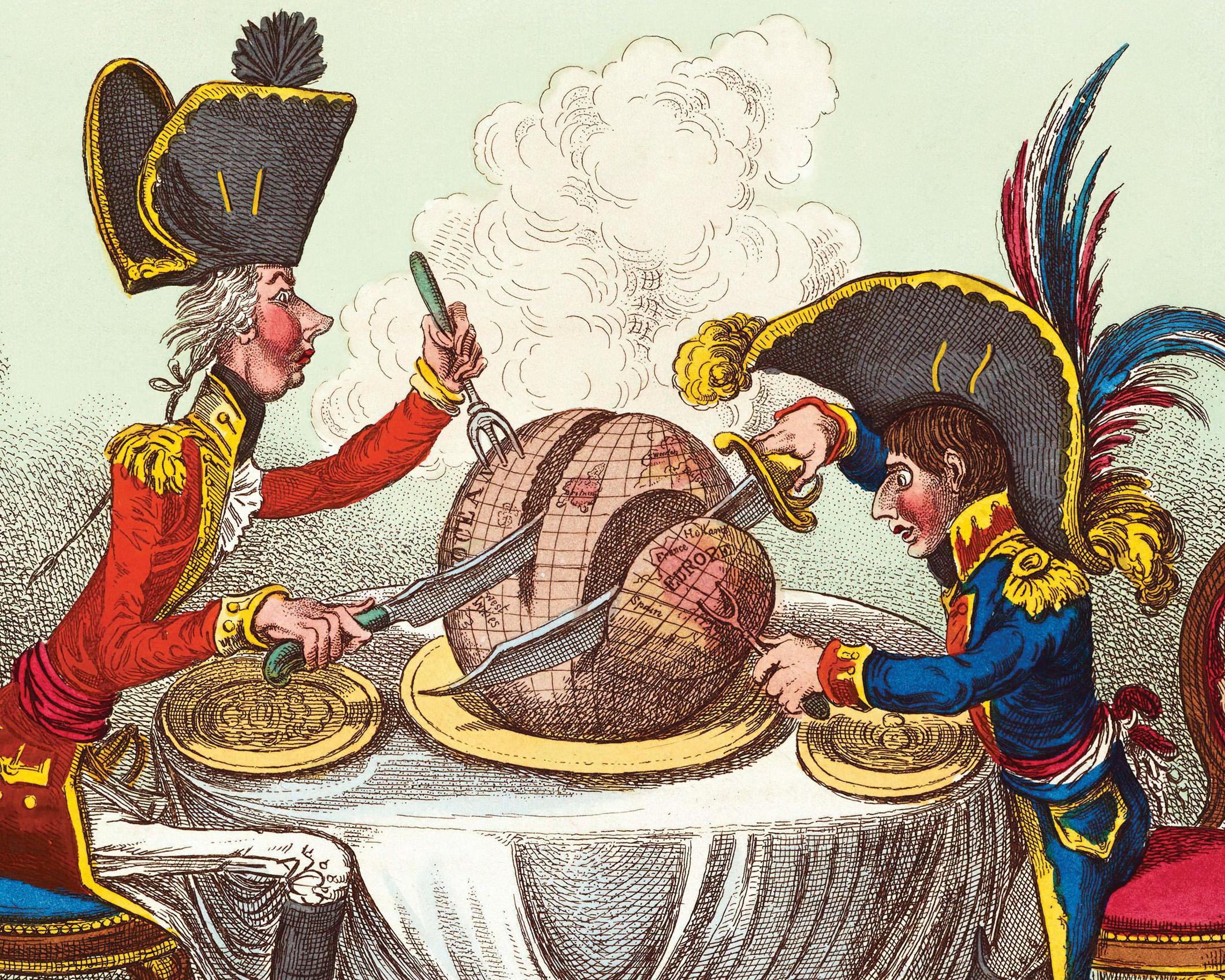
AN article takes time to read, but a picture speaks to us instantly. In the 18th century, William Hogarth campaigned pictorially against idleness, cruelty and drink and Thomas Rowlandson invented comical strips. But it was after 1805, when James Gillray depicted a small, ravening Napoleon carving up the world with William Pitt, that the cartoon— a distillation of news, character and opinion —became a feature of English life. The English tend to laugh at authority rather than rush to the barricades. Hypocrisy, dishonesty, and incompetence are all vulnerable. In unhappy lands where tyrants rule, cartoonists are suppressed, but here, they have thrived.
Napoleon once said that Gillray did him more damage than a dozen generals and ordered anti-English cartoons be drawn in retaliation. However, Gillray struck domestic targets, too, printing entertainingly rude colour pictures of the Prince of Wales—‘a voluptuary under the horrors of digestion’—and of Pitt, vomiting and excreting money in an early version of quantitative easing.
Punch cartoons—infrequently humorous and never scatological—dominated the 19th century. Elaborate allegorical caricatures— many by John Tenniel (illustrator of Alice’s Adventures in Wonderland)—alerted the nation, in anger or in awe, to significant events: a British Lion avenging the Indian Mutiny; society’s foolish ridicule of Darwin (often drawn as simian); Disraeli beguiling Queen Victoria with an Oriental crown. War clouds gathered, but Punch continued unchanged, as with Bernard Partridge’s 1914 German officer standing over a Belgian family he had shot.
This story is from the {{IssueName}} edition of {{MagazineName}}.
Start your 7-day Magzter GOLD free trial to access thousands of curated premium stories, and 9,000+ magazines and newspapers.
Already a subscriber ? Sign In
This story is from the {{IssueName}} edition of {{MagazineName}}.
Start your 7-day Magzter GOLD free trial to access thousands of curated premium stories, and 9,000+ magazines and newspapers.
Already a subscriber? Sign In

Tales as old as time
By appointing writers-in-residence to landscape locations, the National Trust is hoping to spark in us a new engagement with our ancient surroundings, finds Richard Smyth

Do the active farmer test
Farming is a profession, not a lifestyle choice’ and, therefore, the Budget is unfair

Night Thoughts by Howard Hodgkin
Charlotte Mullins comments on Moght Thoughts

SOS: save our wild salmon
Jane Wheatley examines the dire situation facing the king of fish

Into the deep
Beneath the crystal-clear, alien world of water lie the great piscean survivors of the Ice Age. The Lake District is a fish-spotter's paradise, reports John Lewis-Stempel

It's alive!
Living, burping and bubbling fermented masses of flour, yeast and water that spawn countless loaves—Emma Hughes charts the rise and rise) of sourdough starters

There's orange gold in them thar fields
A kitchen staple that is easily taken for granted, the carrot is actually an incredibly tricky customer to cultivate that could reduce a grown man to tears, says Sarah Todd

True blues
I HAVE been planting English bluebells. They grow in their millions in the beechwoods that surround us—but not in our own garden. They are, however, a protected species. The law is clear and uncompromising: ‘It is illegal to dig up bluebells or their bulbs from the wild, or to trade or sell wild bluebell bulbs and seeds.’ I have, therefore, had to buy them from a respectable bulb-merchant.

Oh so hip
Stay the hand that itches to deadhead spent roses and you can enjoy their glittering fruits instead, writes John Hoyland

A best kept secret
Oft-forgotten Rutland, England's smallest county, is a 'Notswold' haven deserving of more attention, finds Nicola Venning